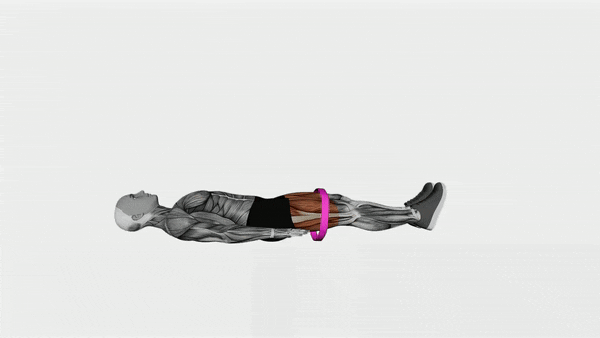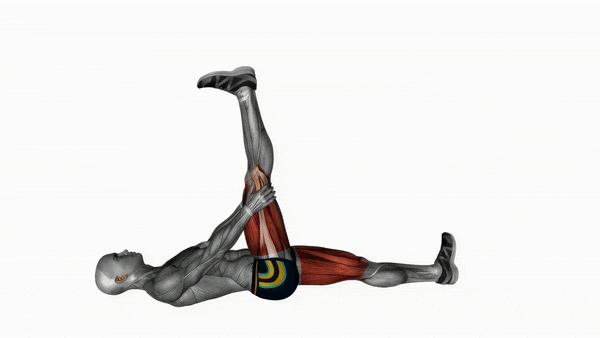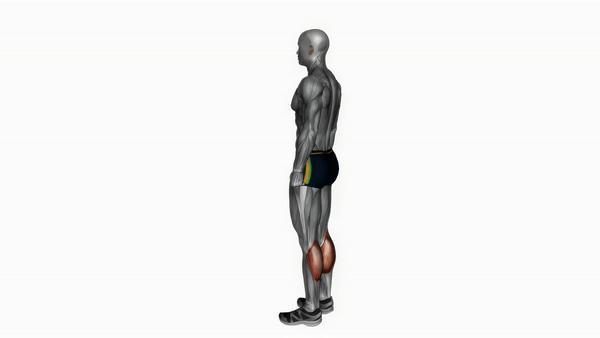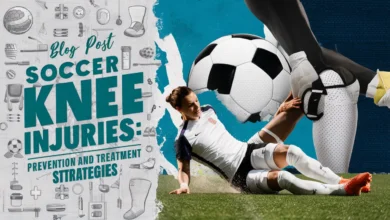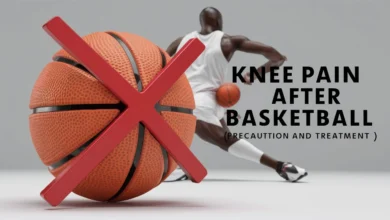Best Exercises for Knee Bursitis: You Can Do at Home 2024

In a world where our daily lives are increasingly sedentary, the importance of maintaining strong and healthy knees cannot be overstated. Knee bursitis, a common condition that causes inflammation in the small fluid-filled sacs around the knee joint, can be debilitating if left untreated. However, fear not – for in the comfort of your own home lies a treasure trove of exercises that can help alleviate symptoms and strengthen the muscles surrounding your knees. Welcome to 2024, where we’ve compiled a list of the best exercises for knee bursitis and get you back on your feet with renewed strength and vitality.
So grab a mat, put on your favorite workout playlist, and let’s dive into this comprehensive guide to reclaiming healthy knees through simple yet effective at-home exercises!
Contents
- 1 Understanding Knee Bursitis
- 2 Top 5 Best Exercises for Knee Bursitis
- 3 Straight-leg raises
- 4 Hamstring stretch
- 5 Heel and calf stretch
- 6 Calf raises
- 7 Leg extensions
- 8 FAQ’s
- 8.1 What is the fastest way to heal the bursitis of the knee?
- 8.2 Does knee bursitis get better with exercise?
- 8.3 What not to do with knee bursitis?
- 8.4 Is it OK to bend the knee with bursitis?
- 8.5 Does exercise help knee bursitis?
- 8.6 Is it OK to walk with knee bursitis?
- 8.7 Can you bend your knee with bursitis?
- 9 Conclusion: Exercises for Knee Bursitis
Understanding Knee Bursitis
Understanding Knee bursitis is essential for anyone suffering from this debilitating condition. The bursae are small, fluid-filled sacs found near your joints and play a crucial role in reducing friction between bones and soft tissues during movement. However, when these sacs become inflamed due to repetitive use or sudden trauma, it can lead to knee bursitis. It’s important to recognize that knee bursitis isn’t just caused by physical activity; medical conditions such as gout or rheumatoid arthritis can also trigger the inflammation of the bursae.
Moreover, understanding the symptoms of knee bursitis is vital for early intervention and treatment. These may include swelling around the kneecap, tenderness when pressure is applied, and pain that increases with movement or pressure on the affected area. By recognizing these signs early on, individuals can seek appropriate medical care and avoid further aggravating their condition through unnecessary strain or activities. Understanding these aspects of knee bursitis empowers individuals to take control of their health and seek out the most beneficial exercises and treatments to alleviate their symptoms.
Knee Bursitis: Causes, Symptoms and Treatments
Top 5 Best Exercises for Knee Bursitis
- Straight leg raises
- Hamstring stretch
- Heel and calf stretch
- Calf raises
- Leg extensions
Straight-leg raises
A basic but efficient exercise for building quadriceps and enhancing knee stability is the straight leg raise. You can work the muscles around your knee joint without overstretching it by lying flat on your back and raising one leg straight up toward the ceiling. Because of this, straight leg lifts are a great option for people with knee bursitis who want to gradually increase their strength.
The capacity of straight leg lifts to target particular muscle groups without the need for any equipment is what makes them unique. For a more thorough workout, you can easily modify this exercise by adding ankle weights or combining variants like side-lying leg lifts. Straight leg lifts, when done regularly, can help reduce knee bursitis discomfort and stiffness, ultimately leading to improved mobility and joint health overall.
Knee Bursitis Treatment Home Remedies | Expert Best 5 Advice
Hamstring stretch
As you work on rehabilitating your knee bursitis, don’t overlook the importance of including hamstring stretches in your routine. Tight hamstrings can contribute to increased stress and strain on your knees, exacerbating bursitis symptoms. By incorporating targeted hamstring stretches into your daily exercise regimen, you can help improve flexibility, reduce tension in the muscles surrounding the knee joint, and enhance overall joint mobility.
When performing hamstring stretches, aim for a gentle yet effective approach. Avoid bouncing or forcing yourself into a deeper stretch, as this can lead to muscle strain or injury. Instead, focus on gradually lengthening the muscles by holding each stretch for 20–30 seconds at a time. Remember to breathe deeply and relax into the stretch to maximize its benefits and promote better circulation to the affected areas.
Incorporating regular hamstring stretches not only aids in alleviating knee bursitis symptoms but also plays a vital role in preventing future injuries and promoting long-term joint health. So take some time each day to prioritize caring for your hamstrings through mindful stretching exercises; your knees will thank you for it!
Heel and calf stretch
Are you looking for a simple yet effective way to alleviate knee bursitis pain at home? Look no further than the heel and calf stretch. This exercise not only targets your lower body muscles but also aids in improving flexibility and reducing strain on the knees. By incorporating this stretch into your daily routine, you can experience increased mobility and enhanced strength in the surrounding areas of your knee joint.
When performing the heel and calf stretch, focus on maintaining proper form and holding the position for at least 30 seconds on each leg. This will ensure that you are effectively stretching out tight muscles and promoting better blood circulation throughout the area. Additionally, pair this exercise with other targeted workouts for knee bursitis to create a comprehensive at-home fitness routine that supports healing and recovery over time. Remember, consistency is key when it comes to seeing significant improvements in managing knee bursitis symptoms through regular exercise like the heel and calf stretch.
Calf raises
Calf raises are often overlooked in workout routines, but they can be incredibly effective for strengthening the muscles surrounding the knees. By targeting the calves, you are also indirectly working on your ankle stability and mobility, which are crucial for maintaining proper alignment and reducing stress on the knee joints. Incorporating calf raises into your exercise regimen can improve overall lower body strength and help alleviate knee bursitis symptoms.
When performing calf raises, focus on slow and controlled movements to fully engage the muscle fibers. You can increase intensity by adding weights or performing single-leg variations. Additionally, varying your foot position – such as pointing your toes inward or outward – can target different areas of the calves for a more balanced development. Including calf raises in a comprehensive leg strengthening program alongside exercises like squats and lunges can provide a well-rounded approach to managing knee bursitis and preventing future injuries.
Leg extensions
To maximize the benefits of leg extensions for knee bursitis, focus on maintaining proper form throughout each repetition. Avoid locking out your knees at the top of the movement to prevent unnecessary strain on the joint. Additionally, consider adding variations, such as incorporating resistance bands or adjusting the range of motion, to target different aspects of your quadriceps muscles. With consistency and attention to detail, leg extensions can be a valuable addition to your at-home workout routine for managing knee bursitis effectively.
FAQ’s
What is the fastest way to heal the bursitis of the knee?
The fastest way to heal knee bursitis includes rest, ice, compression, and elevation (RICE), along with anti-inflammatory medications. Physical therapy can also aid in recovery.
Does knee bursitis get better with exercise?
Yes, gentle exercises that do not exacerbate the condition can help improve knee bursitis by strengthening the muscles around the knee and improving flexibility.
What not to do with knee bursitis?
Avoid activities that put excessive pressure on the knees, such as kneeling or prolonged standing. High-impact activities like running should also be avoided.
Is it OK to bend the knee with bursitis?
It is generally safe to bend the knee with bursitis but avoid activities that cause pain or discomfort.
https://my.clevelandclinic.org/health/diseases/22189-prepatellar-bursitis
Does exercise help knee bursitis?
Yes, appropriate exercises can help strengthen the knee muscles and improve flexibility, which can aid in the recovery from knee bursitis.
Is it OK to walk with knee bursitis?
Yes, walking is generally fine with knee bursitis, but listen to your body and avoid activities that cause pain.
Can you bend your knee with bursitis?
Yes, you can bend your knee with bursitis, but be cautious and avoid movements that worsen the pain.
Conclusion: Exercises for Knee Bursitis
In conclusion, incorporating these simple yet effective exercises into your daily routine can make a significant difference in managing knee bursitis from the comfort of your home. Remember to start slow, listen to your body, and gradually increase the intensity as you build strength and flexibility. Consistency is key, so aim to make these exercises a regular part of your schedule. By taking proactive steps to strengthen the muscles around your knees and improve flexibility, you can reduce pain and prevent future flare-ups of knee bursitis. Don’t wait any longer – start today and take control of your knee health!
